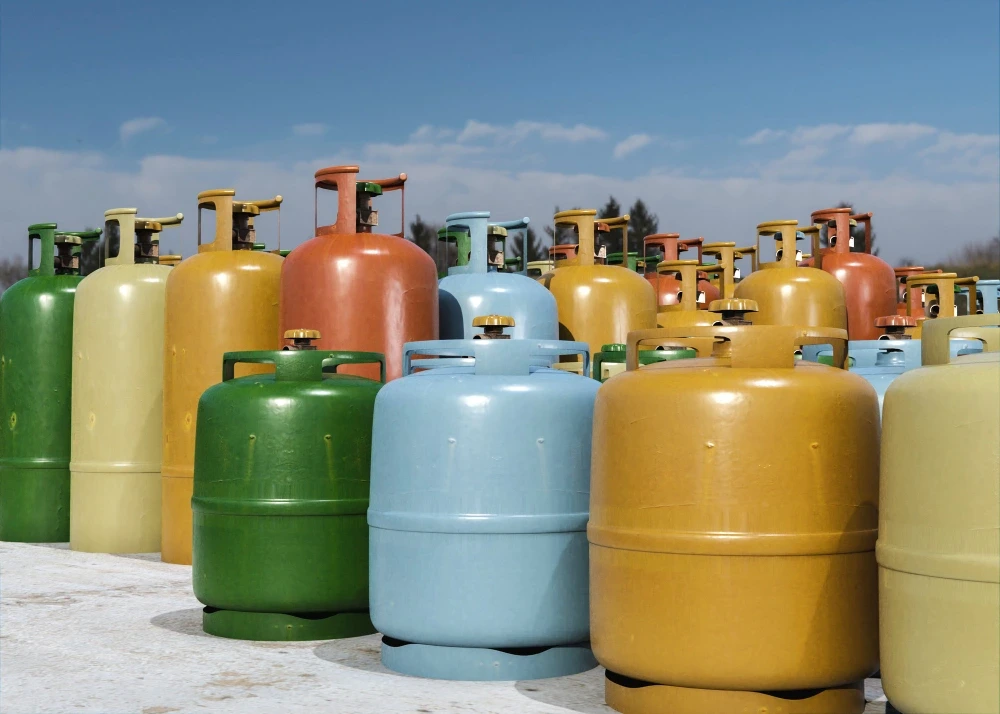Nowadays in daily life, every person has to use the refrigerator and air conditioner at various times. So today we will discuss R134a refrigerant, a special material used to run refrigerators and air conditioners in this post. R134a refrigerant is a widely used refrigerant in various cooling and refrigeration systems.

It gained popularity as a replacement for chlorofluorocarbons (CFCs) and hydrochlorofluorocarbons (HCFCs), which are known for their harmful effects on the ozone layer. R134a has become a standard refrigerant in automotive air conditioning systems, household refrigerators, commercial refrigeration units, and heat pumps. Its properties, versatility, and relatively low environmental impact have made it a preferred choice in the refrigeration industry.
What Is R134a Refrigerant?
R134a is commonly known as tetrafluoromethane, which is a hydrofluorocarbon (HFC) refrigerant commonly used for refrigeration. Since it was found that CFCs mainly damage the weight layer, the use of CFCs has been replaced by HFCs like R134a. That usually doesn’t damage the weight layer.
R134a refrigerant, also known as 1,1,1,2-tetrafluoroethane, is a synthetic refrigerant with the chemical formula CF3CH2F. It is a non-ozone-depleting hydrofluorocarbon (HFC) refrigerant that was introduced as a replacement for ozone-depleting substances such as chlorofluorocarbons (CFCs) and hydrochlorofluorocarbons (HCFCs). R134a is a colourless, odourless gas with a relatively low toxicity level.
Know about the Properties of R134a Refrigerant
Of course, as soon as you know about R134a Refrigerant, you need to know what kind of properties it has. So let’s know how R134a Refrigerant properties are.
- Non-toxic and non-flammable
- Chemically stable under normal conditions
- Compatible with most common refrigeration oils
- Compatible with existing equipment designed for R12 refrigerant (with some modifications)
- Low ozone depletion potential (ODP)
- Moderate global warming potential (GWP)
- Relatively low boiling point (-26.3°C or -15.3°F at atmospheric pressure)
What are the uses of R134a Refrigerant?
We will discuss in this part that with the help of R134a Refrigerant is currently used in the daily life of people.

Automotive Air Conditioning: R134a is commonly used as a refrigerant in automotive air conditioning systems, providing efficient cooling without harming the environment.
Commercial Refrigeration: R134a is used in commercial refrigeration units, including walk-in coolers, display cases, and ice machines, to maintain optimal temperatures for food storage and preservation.

Household Refrigeration: R134a is used in household refrigerators, freezers, and air conditioning units, offering reliable and energy-efficient cooling for everyday use.
Heat Pumps: R134a is used in heat pump systems for both heating and cooling applications, providing year-round comfort in residential and commercial buildings.
How to Detect R134a Leaks?
If you have refrigerators, freezers, air conditioning units, and other heat pumps in your home, you need to know how to spot R134a refrigerant leaks. R134a leaks can be detected using various methods, including:

Pressure Testing: Conduct pressure tests to identify leaks by pressurizing the system with nitrogen or refrigerant and monitoring pressure levels for drops indicating leaks.
Visual Inspection: Inspect refrigeration components for signs of oil or refrigerant leaks, such as oily residues, frost buildup, or hissing sounds.
Electronic Leak Detection: Use electronic leak detectors or ultraviolet (UV) dye kits to pinpoint the source of leaks in refrigeration systems.
R134a Replacements
While R134a has been widely used as a refrigerant for several decades, there are ongoing efforts to develop alternative refrigerants with lower global warming potential (GWP) and environmental impact. R134a Refrigerant is often used in various cooling systems and heat pumps.
But if for some reason this R134a Refrigerant runs out, if you do not get this refrigerant, you have to choose another good refrigerant. Some potential replacements for R134a include hydrofluoroolefins (HFOs) such as R1234yf and R1234ze, as well as natural refrigerants such as carbon dioxide (CO2) and hydrocarbons (HCs).
Is R134a Still a Viable Refrigerant Option?
Nowadays you will find various good refrigerants in the market. But despite those refrigerants, if you use R134a refrigerant, you will benefit as well as reduce environmental pollution. Despite concerns about its environmental impact, R134a remains a viable refrigerant option for many applications due to its proven performance, compatibility with existing equipment, and widespread availability.
However, as regulations continue to evolve and environmental considerations become increasingly important, there is growing interest in transitioning to alternative refrigerants with lower GWP and improved sustainability.
In Conclusion
R134a refrigerant is a widely used refrigerant known for its non-ozone-depleting properties, stability, and versatility. It is commonly used in automotive air conditioning, household refrigeration, commercial refrigeration, and heat pump applications. We hope that by reading this post you have learned about R134a refrigerant and its properties, applications and various other information. If you like our post then you can share it with your friends and family.



